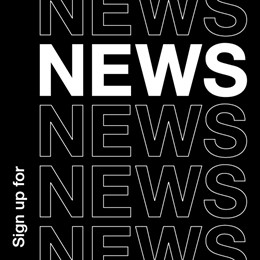AI: setting type free

Adam Johnson, senior creative director at Interbrand, cuts through the AI hysteria and imagines its role as another part of the type design team.
This is not a hyperbolic comment on the latest feature (released today, superseded soon) from any one of the proliferating tools at our fingertips (available now, for just one low monthly price!).
We’ve all been there, read that… or at least scrolled past.
This is a note of optimistic excitement and impatience.
We all know creativity to be an innately human trait and at its best, a hugely enjoyable one. Engineering a prompt will never beat the chemistry of creative collaboration or singular crafting.
At Interbrand, we work with businesses of all shapes and sizes. While each varies from the next, one thing they all share is their need for intelligently creative answers to big challenges their brands are facing. To do this, we’re always exploring new and better ways to find, articulate and express the answer.
Custom typefaces are increasingly accessible and viable as a way of communicating a brand’s unique attitude and spirit. We now, more often than not, collaborate with our clients to create new or modified typefaces as part of rebrands, big and small.

[Our work with LEGO, Bugatti and engineering firm AtkinsRéalis (along with many others) has used custom type to create differentiation and embed it in the most used asset of their identities.]
The success of brands investing in bespoke typography – creating another asset that identifies them, without having to plaster a logo or strapline everywhere – has proven the power of differentiation through type design. The number of excellent type foundries now within financial and spiritual reach of brands and agencies has played a part too.
With variable fonts embraced with motion in mind and embedding increasingly simplified, custom typefaces are becoming the norm for ambitious brands.
As designers, we are skilled at not only embracing but evolving with new tools. Not out of necessity, but out of curiosity — finding new techniques and forms of expression, before the new becomes the norm and we move on once again.
So, as we explore how AI can take us in new directions, what part will it play in the next evolution of type design? Type has always moved forward with each technological leap. AI won’t be any different.
Today, it is already freeing designers from repetitive tasks, like extending established character sets or drafting italicised fonts. The future promises much more excitement.
Imagine an infinite shared sandbox where human collaborators – clients and partners alike – can bring influences and references, ideas and curveballs and invite AI to go play.
The joy of collaboration will be supercharged by quicker (lo-fi) sketching and testing of ideas, freeing up time for further exploration.
This will empower designers to take more risks, embracing rather than avoiding the jeopardy of the weird but potentially wonderful ideas that often fall at the first hurdle. AI can help us question the rules — suggesting letterforms that challenge the norm and enabling type that is truly adaptive and reactive to context and audience, not just variable in style.
With the ability to instantly explore wider than before, typographic lookalikes should be a thing of the past. If we can create anything at all, why create something similar to the competition?
Standards should rise, not lower to the worst passable level. Our roles as curators and creators of what is good, what can be better and how to get there are elevated, and so too the requisite craft, regardless of the tools at our disposal.
The question isn’t when or if, but how we want to use AI to enhance creativity in type design. In Monotype’s latest report, Re:Vision, Future Typography, we’re asked, “What is it that we do that a machine will never be able to?”
At the same time, we should also ask what is it that we want to experience more of.
My votes? Joy, risk-taking and excellence.













